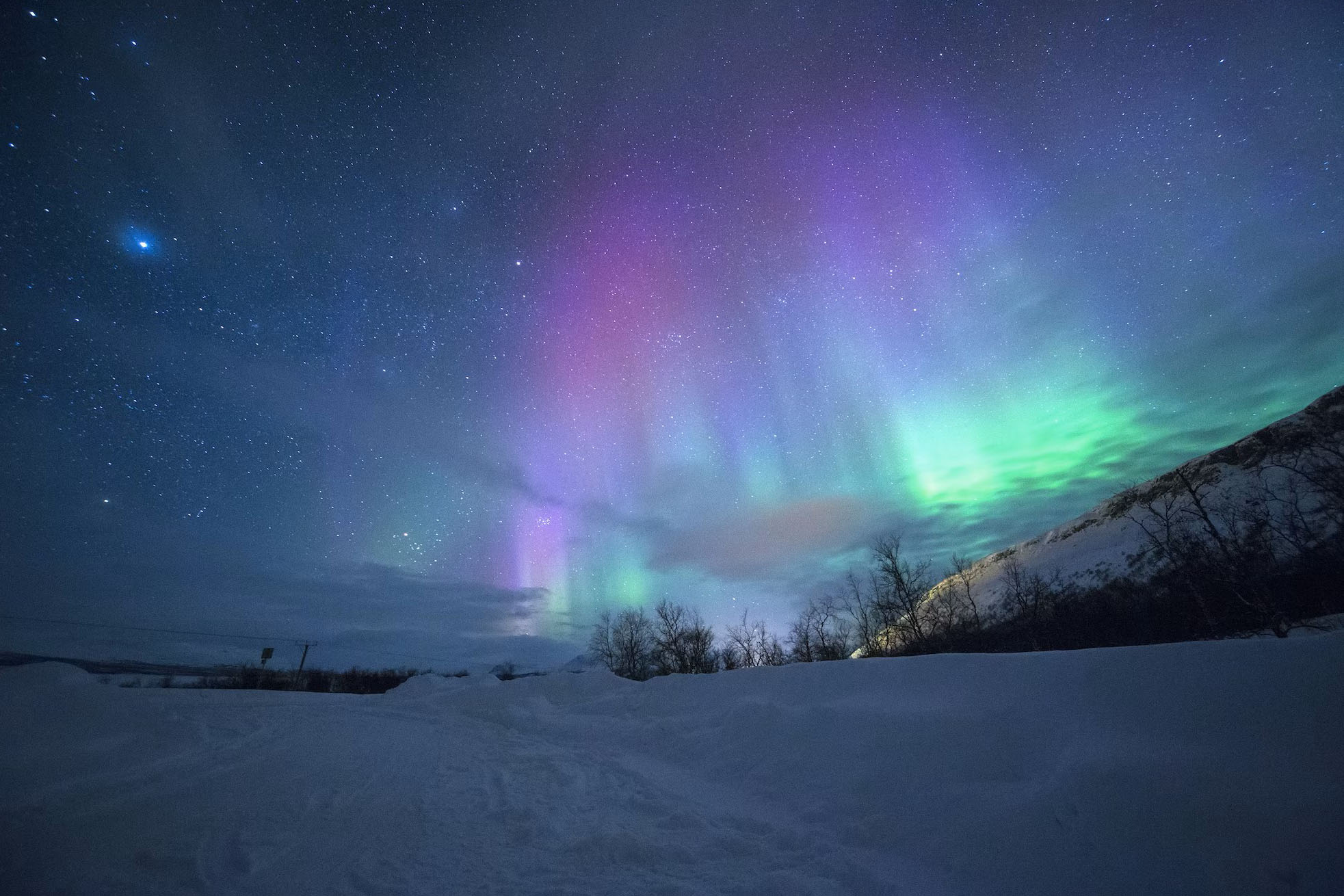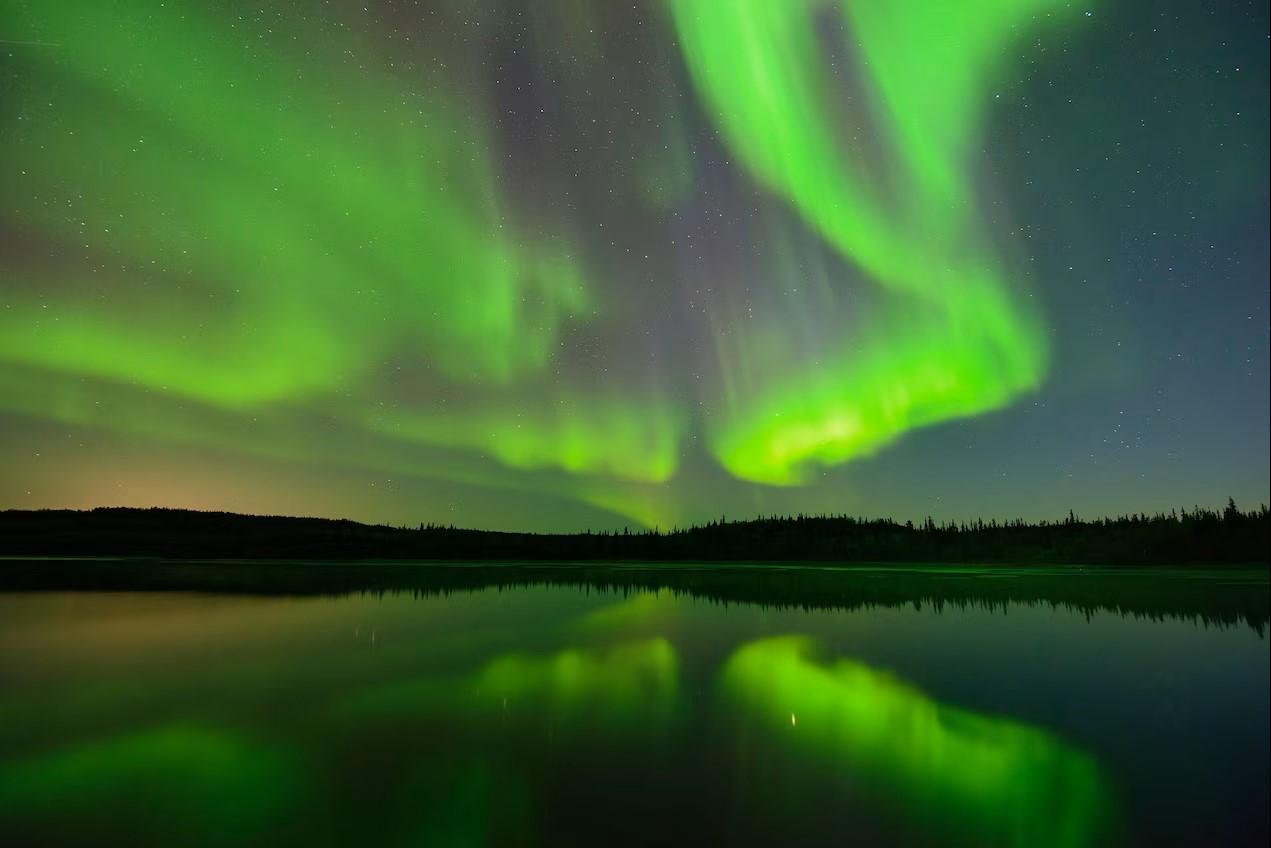The Northern Lights, also called by their Latin name Aurora Borealis, are one of the most beautiful sights you can see in the sky.
You can only see the Northern Lights from the Northern part of the Northern hemisphere, but you can see the Southern Lights, Aurora Australis, from the Southern part of the Southern hemisphere, and they are just as beautiful. So if you live in the Southern hemisphere just substitute Southern for Northern throughout.

Our ancestors were painting quite stunning pictures of the Northern Lights on the walls of their caves more than thirty thousand years ago.
How are the Northern Lights produced?
The Earth has a magnetic field, it is as though there is a huge bar magnet inside it, with one end (the magnetic North Pole) close to but not actually at the Earth's North Pole and the other end (the magnetic South Pole) close to but not actually at the Earth's South Pole. An old-fashioned magnetic compass actually points to magnetic North, and you need to remember this if you are navigating using map and compass rather than SatNav.
The Earth's magnetic field is strongest near the Poles and weakest near the Equator, but it is also affected by lots of other factors, and varies from place to place and even from day to day.The Sun is shooting out millions of high speed charged particles every second and some of these may eventually reach the Earth and enter the Earth's atmosphere. The Sun's activity, and so the rate at which it shoots off these particles, is not constant. Near the Earth they will be affected by the Earth's magnetic field and then they may interact with the atoms and molecules of the different gases in the upper atmosphere to produce flashes of coloured light, the aurora - which colour depends on which gases. The stronger the magnetic field and the greater the number of the particles, the greater the interaction and so the brighter and more spectacular the aurora.
To see the Northern Lights at their most spectacular you really need a dark and cloudless sky, so winter time, to be as far North as possible, and far away from sources of light pollution. Alaska, Canada, Greenland, Iceland, the Shetlands and Scandinavia are very good, and you can book Northern Lights Winter Holidays in these places. You can also often see them further South, for example in Scotland and Northern England, depending on the activity of the Sun and variations in the Earth's magnetic field, but only very occasionally can you see them in Southern England. But on the evening of Tuesday 12th September 2023 conditions were just right to give spectacular displays as far South as the Isles of Scilly.For the UK, all you need to find out whether you might be able to see them from where you are is a free App (AuroraWatch UK) for your PC or phone or tablet, which is updated several times a day.
Several places also have permanent Aurora WebCams which you can look at on your PC or device.There are of course Aurora web cams for both Northern and Southern Lights, just remember it is the date and time where they are that matters! Just do a web search on Aurora WebCams.
© Barry Gray September 2023